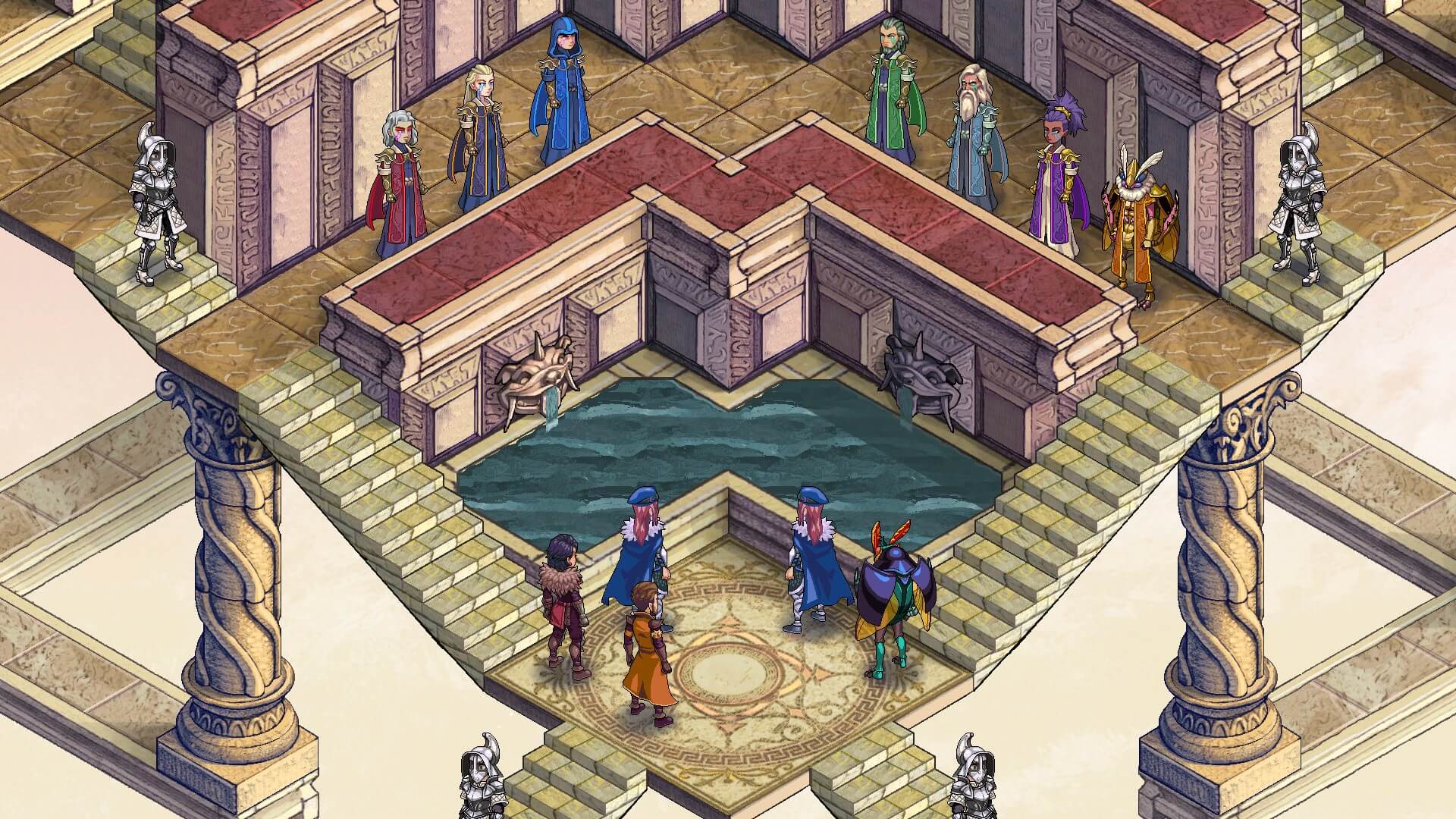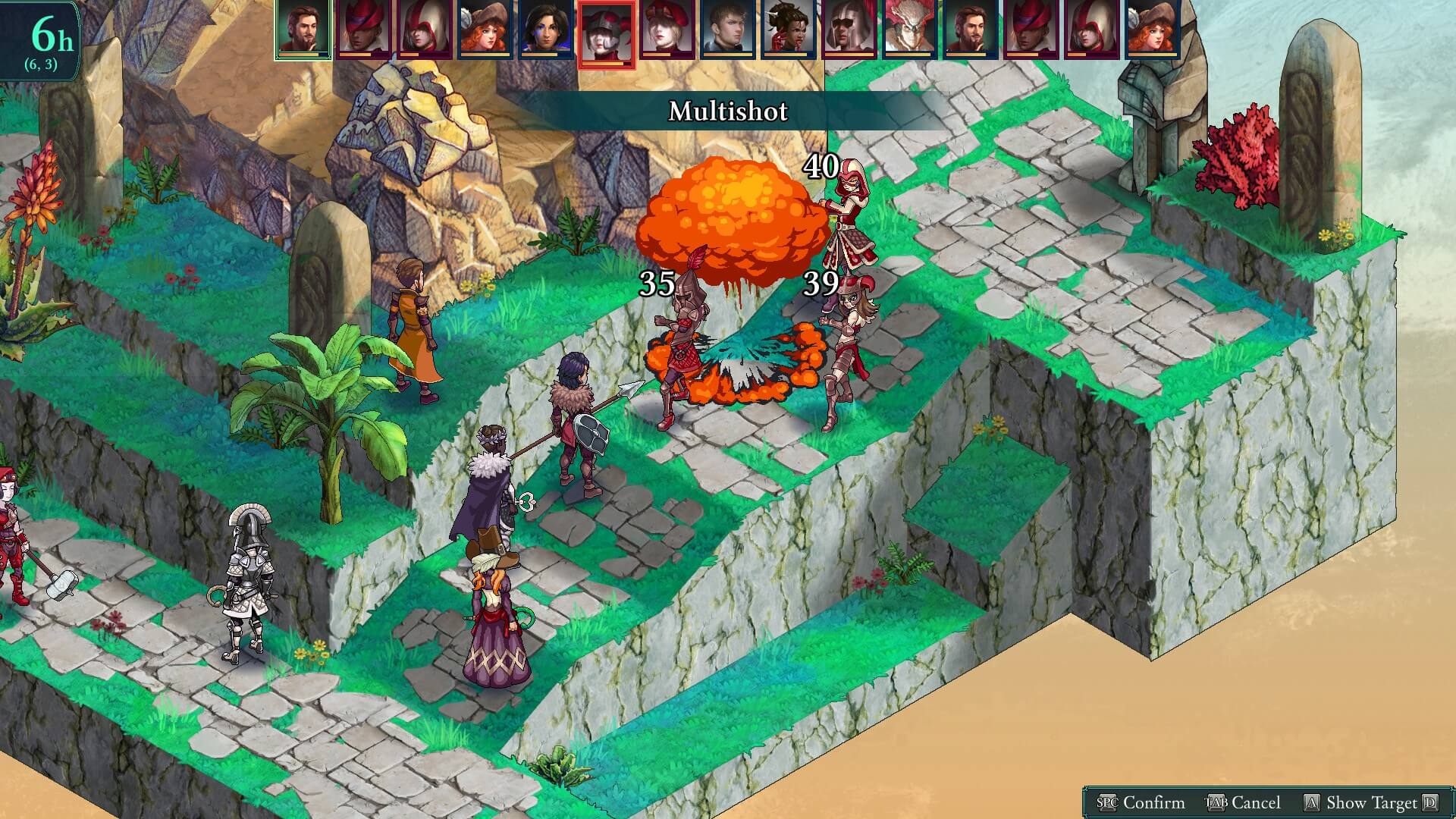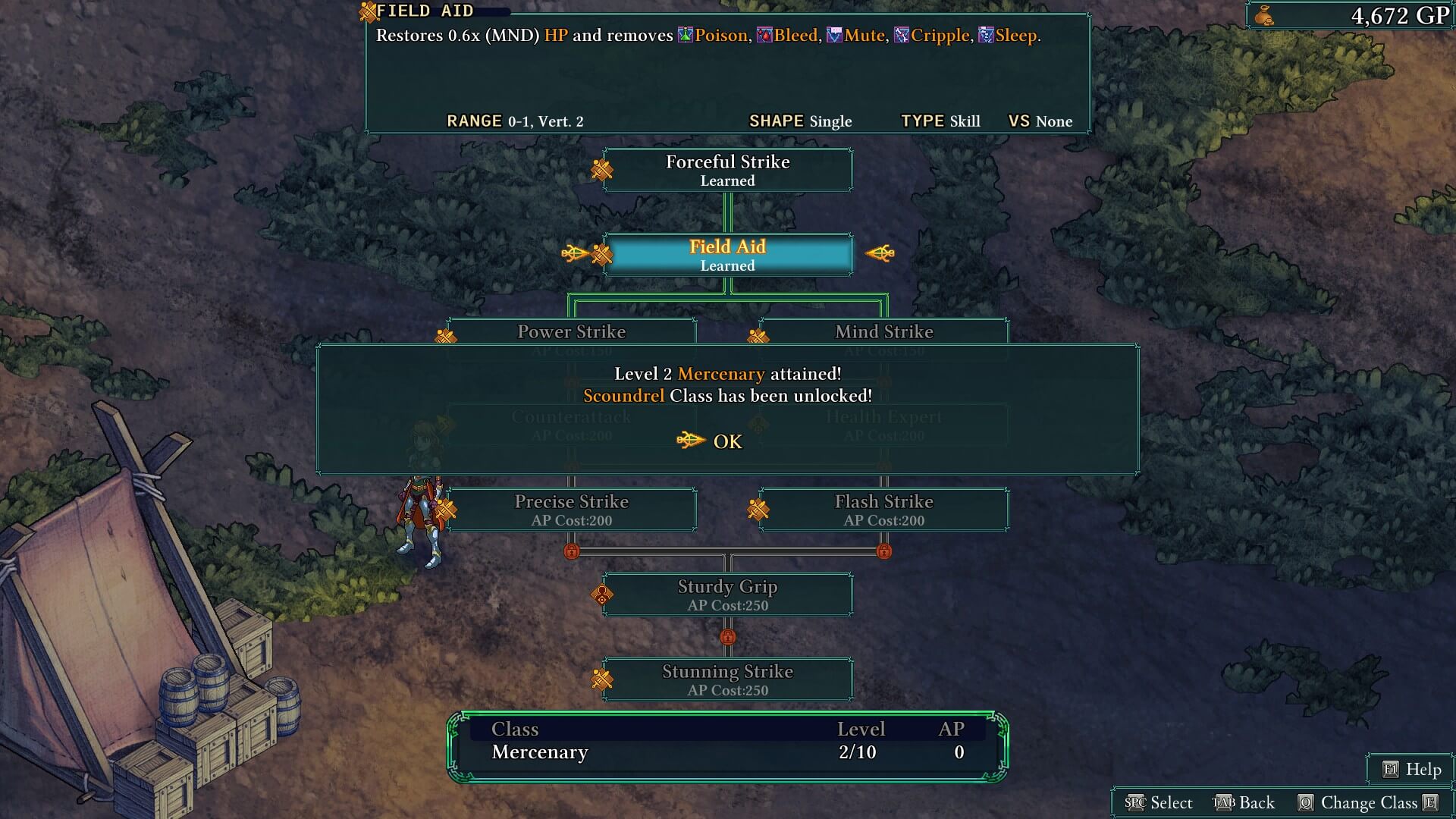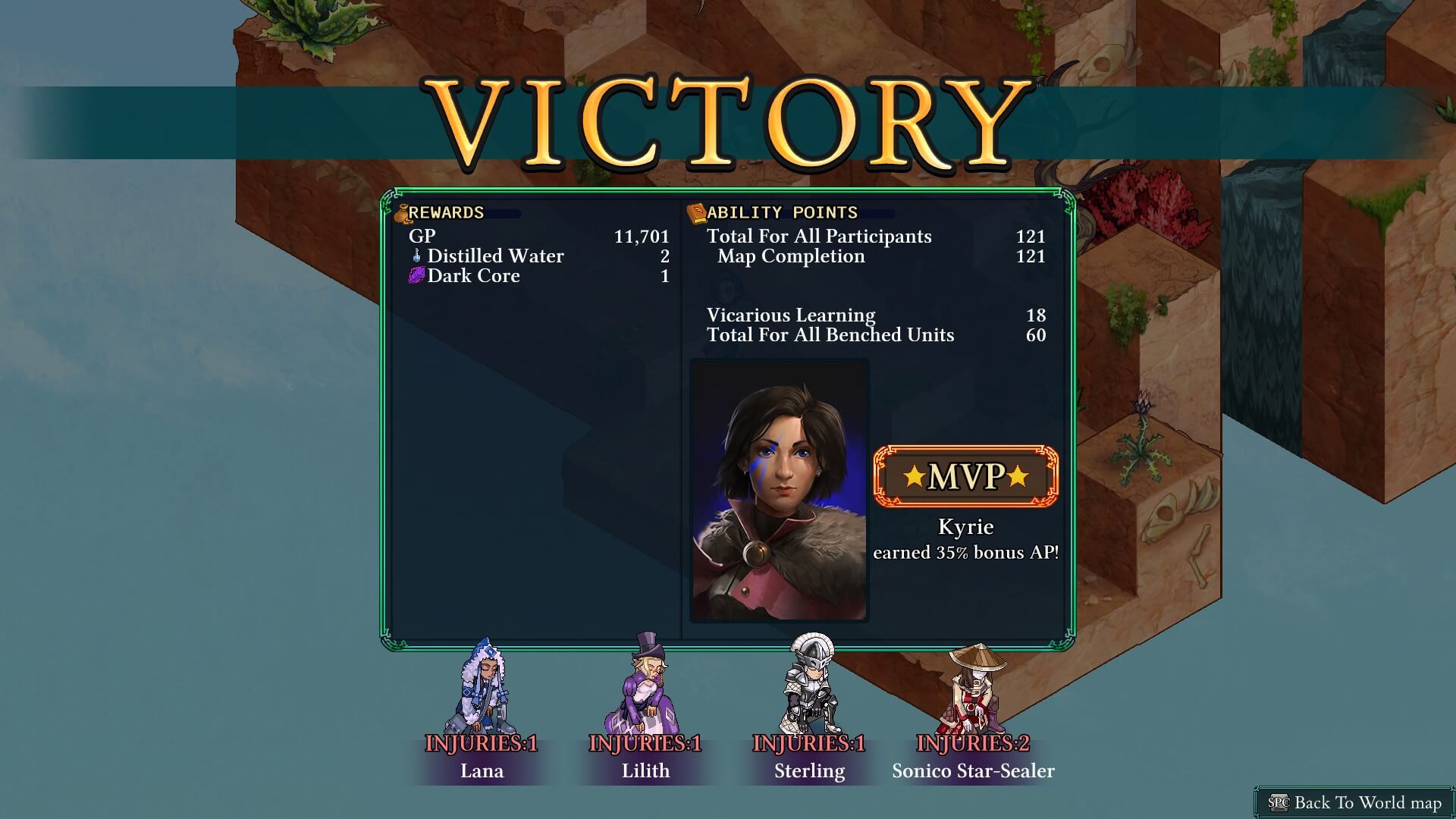Around two years ago, we got stuck into the rather promising demo for tactical role-playing game Fell Seal: Arbiter’s Mark. Two years on and we’re delighted to see that Fell Seal has followed its promise through to a beautiful full release. So what can you expect if you dive in today?
The demo, when we saw it, offered us three key glimpses into the soul of what would be the full game. Those glimpses were: a story and setting with a unique feel and distinct characters; a deep combat system with plenty of options for great tactical gameplay; and a customisation stretching across gameplay, from basic cosmetics to unique multi-class combinations. Short as it was, we were impressed.
Fell Seal: Arbiter’s Mark now boasts approximately forty-five story encounters spread across its map, with between forty and sixty hours’ play time if you don’t do much grinding. In our time with it, we’ve found grinding largely optional, but still entertaining if you choose to go down that route. If you want to explore all the possible class combinations, you can grind your heart out; if you just want to experience the story, you should only need to do a few battles on the side between story missions.

The story laid before you is one of corruption. A ruling council of immortals appears to turn a blind eye to dodgy deals and unsound morals within the peacekeeping force that they themselves founded. You play as a team of these Arbiters, composed of key story characters and characters you can create yourself. With them, you will follow in the disastrous wake of those who would also become immortal, getting to know the people alongside you and the world around you along the way.
As you navigate the world map, you first come across story encounters – unique combat scenarios sandwiched by cutscenes. Often, you can revisit the area afterwards by patrolling, which lets you level up your characters and collect resources outside the core path of the story. Encounters can vary quite a bit in each patrol area, but they are generally matched to your level, capped between certain values. Story combat tends to be a lot more unique, with special enemies and challenges to consider, but there’s plenty to do in patrol combat as well.
In our preview, we mentioned that we weren’t sure that Fell Seal: Arbiter’s Mark had flanking bonuses. It definitely has flanking bonuses. Making sure your characters get behind the enemy to do maximum damage could be the difference between a win one turn and a close defeat the next. Keeping your own backs out of reach is difficult, but advisable. Our only wish with the combat as it is now is that they add some more obvious indication of when an enemy will evade the attack you’re about to use: a tooltip appearing when they’re highlighted as a target would save far more time than flipping through their stat screen.

You can expect a normal array of stats in Fell Seal: Arbiter’s Mark, HP being the one you need to keep your eye on most. Speed and equipment govern how far your characters can move, which (optionally) takes up half of each of their turns. The remaining half is left over to abilities. Some of these are passive, some use MP, some are purely physical and some, often able to turn the tide of a battle, act as counters to attacks. If you’re stuck in a bind, you have a range of craftable items to help you along the way as well.
Between battles, you have a chance to upgrade your gear and recruit more characters at cities. You don’t need to replenish your supplies, as having a number of items (such as potions) in your inventory just controls the number you can use per battle, rather than acting as a consumable stockpile. You can craft a lot of the special items and equipment yourself, but resources aren’t too quick to come by, so it’s best to save them for whatever money can’t buy, like consumable items. Upgrading these as you go increases their potency and the number of uses you can get per battle.
With the guild, you can recruit characters of any class you’ve unlocked up to the level of your highest-level character. It’s here that you can go a little crazy customising them, although there weren’t as many customisation options as we initially expected. It can be a bit difficult to find a portrait to match a character, so you end up making a character to match a portrait instead — some way to auto-generate a portrait to fit the customisations you’ve selected would have been welcome, but may have been too difficult to implement in the time available.

In any case, the art of Fell Seal: Arbiter’s Mark fits just fine. The enemies are gorgeous (and sometimes cute), the combat areas are detailed and characters’ expressions change during dialogue, both in their portraits and in their sprite animations, which we thought was a nice touch. In fact, character was a strong note throughout Fell Seal’s story, with strong interactions between people from side missions and dialogue all the way to the main quest. If only there had been some more variety in the music — what there is is fun to listen to, but not after it’s stuck in your head all day after being on loop.
All of your characters gather together in the troop menu, where you can examine everyone, change their equipment or classes and fiddle about with abilities. You can see at a glance which characters have injuries (when they’re knocked out in combat), as they’ll be kneeling down until you select them. The exception to this is if you’re playing with permadeath — when they’re gone, they’re gone. Each character can gain normal experience, netting them a certain bonus to stats when they level up, depending on their active class; and class-specific ability points, which you can use to unlock new abilities in both your active class and others. Of course, the active class levels up faster, until you master that class by unlocking all its abilities.

Beginning with access to a few basic classes, you soon start levelling them up and unlocking new abilities. The fact that you can make use of two classes at once means you can come up with some cool or useful combinations. One of our favourites is a templar/mender, who can heal things just as hard as he hits them. You can even pick and choose your secondary passives and counters from any class you’ve unlocked, which means our gunner/ranger who also happened to have mastered the assassin class could dual-wield pistols. Nice.
Beyond the simple classes, the tree of unlocks become a bit more convoluted. Ranger, gunner and assassin are sequentially more difficult to unlock after the base classes. To unlock assassin, you might need to have levels invested in five other classes (you can avoid some prerequisites by hiring a new character with a mid-tier class as their main class). But these high-tier classes can be pretty amazing. Sorcerers can fling fireballs and lightning across the entire map. Warmages can follow up melee attacks with powerful spells.

The problem with this is that new hires don’t start quite as you want them and you may not want to keep switching your existing characters through yet more classes if you’re happy with what they currently are. New hires do start with a good portion of ability points split across all classes (much as all characters gain some AP from an encounter, even when benched), but that means their main class doesn’t get any special attention and they often don’t meet the prerequisites of their own class. Whether it would have been better to meet these requirements before dishing out the rest of the AP, we don’t know, but it may have made meeting higher-tier classes a bit less of a chore.
By far a more annoying problem is the fact that straight EXP is only awarded after completing certain actions (successfully) during combat: attacking, landing a killing blow, healing, buffing and debuffing. On the face of it, this is a great way to hand out experience. As you get further into the game, however, and acquire more characters, it becomes an issue. You can only take up to seven (usually six) characters into a fight. That means any other characters are on the bench, getting no experience. As encounters seem to scale with your highest level, it becomes more difficult to level weaker characters. Even just a little shared experience for benched characters (or the option to toggle it on) could water down the grind for those who still want to try out extra class combinations.

To add a little more to the mix, there are classes unique to certain characters and special classes you can unlock with craftable items. But we won’t go into them too much for fear of revealing spoilers. It’s worth noting that one of those classes in particular is essential for reaching hard-to-get treasures, which are present in some of the patrol locations until you’ve opened them.
Almost forty hours in and Fell Seal: Arbiter’s Mark has proven to be an excellent game. We’re hooked on the story, love the characters and find unlocking all the cool new classes exciting, even if it does make things a bit grindy. We can’t recommend this game enough to anyone with a love for games like Final Fantasy Tactics, no matter what play style you prefer. When you have the perfect combination of fighters out on the field, the options available to you in combat are immense.
And yet when things go wrong — when enemies ten levels lower than you wipe your entire party or the ally you’re protecting gets one-hit-KOed half an hour into a fight — it can be one of the most utterly rage-inducing experiences in the game. Thankfully defeat is rare, but… has anyone got replacement Alt and F4 keys?
Purchase Fell Seal: Arbiter’s Mark on HumbleBundle.com
Fell Seal: Arbiter’s Mark is available now for PC, Mac, Linux, Xbox One and PS4.